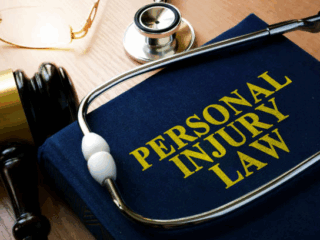Tramadol and Tylenol are two common medications that are often taken together. Tramadol is prescribed to treat moderate to severe pain and Tylenol is recommended to reduce fever or relieve minor aches and pains. Combining these two medications can be beneficial in some cases, but it also has its risks.
How close together can you take tylenol and tramadol
For instance, it’s important to know how close together you can take tylenol and tramadol, as taking them too close together increases the risk of side effects related to liver damage. Additionally, there’s a heightened risk of stomach bleeding if you take too much of each medication at once or take them for long periods of time. It’s highly recommended that you never exceed the maximum dosage for either medication when taking them simultaneously.
This guide will cover what you should know about the interactions between Tylenol and Tramadol and provide tips on how closely you can take both drugs safely. We’ll also discuss potential side effects and what precautions you should take when combining these drugs:
- Monitor your dosage levels.
- Be aware of the potential side effects.
- Talk to your doctor before taking both medications together.
What is Tramadol?
Tramadol is an opioid pain reliever, used to relieve moderate to moderately severe pain. Its effects range from mild sedation and comfort, to feelings of euphoria. Common side effects include nausea, constipation, lightheadedness and drowsiness. Tramadol is prescribed by healthcare professionals all over the world for temporary or chronic pain relief.
It’s important to note that, while tramadol can be effective when used alone, it can also be dangerous when taken with other medications. Tramadol must not be taken with alcohol, other opioid drugs (including codeine), or certain prescription and over-the-counter medications like acetaminophen (Tylenol), as there are risks associated with taking them at the same time.
Taking more than 4,000 milligrams of Tylenol in a single day has been linked to serious health complications such as liver damage and death due to overdose; however there are no long-term studies on the risk of taking both substances together. Therefore it is not recommended that you take tramadol and Tylenol closer together than 24 hours apart in order to reduce the risk of potential side effects and serious health complications associated with this combination.
What is Tylenol?
Tylenol (acetaminophen), is a widely used, over-the-counter pain reliever and fever reducer. It is usually found in combination with other medicines in products such as cold and flu treatments, pain relievers and sleep aids. Taking too much Tylenol can cause liver damage, so it is important to follow the instructions on the product label.
Tramadol is an opioid pain medication also referred to as a narcotic analgesic medicine. It works in the brain to change how your body feels and responds to pain. Taken as prescribed by a doctor, Tramadol can help manage moderate to moderately severe pain. However, it should be noted that taking Tramadol can be habit forming when it is misused or taken for long periods of time, increasing the risk of addiction and dependency. As such, it should not be taken for more than three consecutive days without consulting a doctor first.
When taken together, Tylenol and Tramadol may have an additive effect which increases the risk of overdose symptoms and accidental death if too much of either drug is taken simultaneously or if they are taken too close together. You should not take these drugs within 8 hours of each other unless your healthcare provider directs you to do so otherwise.
Potential Risks of Taking Tramadol and Tylenol Together
Taking tramadol and Tylenol together can be a dangerous combination due to the potential risks associated with the combination. Tramadol is an opioid pain reliever, while Tylenol is an over-the-counter pain reliever. When taken together, these medications can increase the risk of serious side effects.
It is important to understand the potential risks and how close together you can take these two medications.
Risk of Overdose
Combining tramadol and Tylenol can increase the risk of overdose, since both medications possess analgesic properties and are available in various strengths. Taking high doses of either one can lead to an overdose alone, but taking them together increases the chance exponentially. It is important to know your normal dosage for each medication, as well as the maximum recommended daily dose for each drug; this will help ensure you don’t exceed a safe limit.
Combining these medications could cause too much active ingredient present in your system at one time and lead to side effects such as nausea, drowsiness, respiratory depression or even death. Therefore it is important to understand how close together these medications can be taken safely and if there’s any overlap between them when being taken with other medications.
Talk with your healthcare provider about any potential risks that could be associated with taking these drugs together closely:
- Understanding how close together these medications can be taken safely.
- Checking for any overlap between them when being taken with other medications.
Risk of Liver Damage
Taking acetaminophen (Tylenol) and Tramadol in combination may increase the risk of liver damage. There is evidence that when Tramadol is combined with drugs containing acetaminophen, the risk of liver damage increases exponentially. Acetaminophen can cause liver damage even at low doses when taken over a long period of time. The combination of acetaminophen and Tramadol can cause even faster damage to the liver. This may occur when the drug combination is taken in high doses, over extended periods of time or with alcohol consumption, which can cause an additional burden on the liver.
The risk also increases for individuals who have existing liver or kidney disease, or are taking other medications that contain acetaminophen, such as cold and flu medicines and other pain relievers. Taking both Tramadol and Tylenol together can overwhelm the body’s ability to metabolise them safely and cause mild to severe side effects like nausea, vomiting, abdominal pain ,jaundice, fever and dark urine. Prolonged use at high doses can cause more severe adverse events such as tissue necrosis in people with existing kidney or liver disease which could possibly lead to life-threatening events such as renal failure or death.
It is important to speak with your doctor before taking Tramadol/Tylenol together as they will be able to assess your individual risks based on any underlying medical condition you may have prior to taking this drug combination. They will also be able to advise you on how close together these medications should be taken so that the risks are minimised while still providing effective relief of pain symptoms.
Risk of Interactions with Other Medications
Although Tramadol and Tylenol are not typically used together, if they are both prescribed by a medical professional there is a potential risk of interactions with other medications. It is important to be aware of any potential risks associated with taking them at the same or close to the same time.
When taken together, both Tramadol and Tylenol can increase the effects of drugs used to treat epilepsy. This can lead to serious side effects, including seizures, confusion and hallucinations. Patients taking Tramadol or Tylenol should never stop taking any anti-epileptic drugs without consulting their doctor first.
Tramadol can also interact with several antidepressants, reducing the effectiveness of one or more of them. When combined with certain antidepressants like Monoamine oxidase inhibitors (MAOIs) for example, this can lead to dangerous side effects such as a rapid heartbeat or difficulty breathing. Taking other pain medications along with Tramadol can also increase your risk of breathing problems as well as dangerously high blood pressure levels.
Similarly, when taken together some medications that are used to treat anxiety or insomnia may also cause difficulties in breathing or an extremely slowed heart rate. People who take opioid medications should always speak with their doctor before combining them with other medicines such as Tylenol. It is also important to talk about what vitamins and dietary supplements you may be taking prior to combining these medications together for safe use together.
How Close Together Can You Take Tylenol and Tramadol?
It is important to understand the risks associated with taking Tylenol (acetaminophen) and Tramadol together. While both medications can be used to treat mild to moderate pain, combining them can lead to serious side effects including liver damage, increased risk of overdose, and serotonin syndrome.
It is not recommended to take Tylenol and Tramadol at the same time or in very close succession due to their combined effect on the body’s central nervous system. The max recommended daily dose of acetaminophen should never be exceeded, as this can lead to toxicity and possible permanent liver damage. Taking too much Tylenol prior or during a Tramadol dose can increase the risk of an overdose reaction or potentially life-threatening condition called serotonin syndrome.
Serotonin Syndrome occurs when two drugs are taken that both affect serotonin levels in the body leading to a rapid rise in levels of this neurotransmitter resulting in confusion, agitation, increased heart rate, hyperthermia and more severe symptoms which require immediate medical attention.
When taking both tramadol and Tylenol it is important to talk with your doctor about how quickly each one should be taken. Generally speaking, it is advised they are spaced out by at least 6 hours apart if taken within 24 hours of each other. It is also best practice not to exceed the max daily dose for either medication unless directed by your doctor or healthcare provider.
Conclusion
The use of both tramadol and Tylenol together can offer certain benefits to those with moderate to severe chronic pain. However, combining these two substances increases the risk of serious side effects, including the potential for overdose and addiction.
It is important to speak with a doctor before taking any combination of medications, as individual risk factors may make it dangerous to mix certain substances. When choosing between medications, it is also essential to consider how they interact with one another and how close you can take them in relation to each other. Be sure to read up on all medication instructions and always follow your doctor’s recommendations when dosing any medication.











